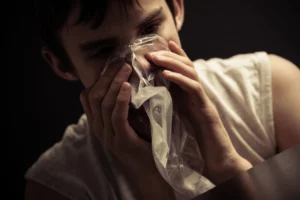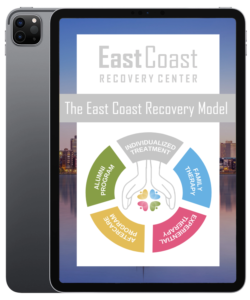The act of “huffing” is now a widespread issue among adolescents. This involves inhaling fumes from various everyday items, for instance, adhesive, cleaning supplies, or paint. This practice creates a sensation that is similar to the effects of alcohol consumption.
A recent investigation has demonstrated that the consumption of inhalants is increasing. Eight-grade student users have increased by eighteen percent, and the figures from those in the sixth grade are even more remarkable, with a startling forty-four percent rise in users in the past two years. Continue reading to learn more about huffing including its many dangers, side effects, and what to do if you suspect someone has been huffing.
What is Huffing?
Inhaling fumes from various household items is known as huffing, or sniffing. This is a form of substance abuse that is done in order to achieve a high, to see visions or to experience hallucinations. Popular for its ease of access and affordability, spray paint tends to be the most common item used in this practice. But what people don’t realize is that the toxic chemicals in paint can cause serious repercussions.
Every year, there are numerous cases of severe injury or even death resulting from huffing paint and other inhalant abuse. The term “huffing” is commonly used when referring to the inhalation of various substances for the purpose of getting high. According to the National Institute on Drug Abuse (NIDA), there are various methods of using inhalants to achieve this effect, such as:
- Huffing – inhaling substances by putting it on a cloth and covering the mouth and nose
- Bagging – putting the substances in a bag and inhaling through an opening
- Spraying – When an individual sprays the substance into the mouth or nose
- Sniffing/Snorting – Inhaling substances through the nasal canal
Side Effects of Huffing
Inhaling substances through the nose or mouth is extremely hazardous and can cause lasting physical harm. Inhalants are known to cause permanent harm to the brain, as well as other side effects including, but not limited to:
- Dizziness
- Lack of coordination
- Confusion
- Lethargy
- Muscle weakness
- Aggression
- Muscle spasm
Why Do People Huff Inhalants?
An addiction to huffing can be caused by the short-term effects these inhalants have on the brain. These effects are comparable to alcohol and cause feelings of euphoria, dizziness, and slurred speech, making the user feel light-headed and intoxicated. Inhalants tend to be favored by young teenagers since they are easy to access, such as spray paint. The intense pleasure provided by the substance is short-lived and can lead to more abuse. Despite knowing the damaging effects of huffing, some individuals may have difficulty controlling their use. In this case, young teenagers may need to seek professional help to break their addiction.
According to a 2011 research, roughly 9 percent of the US population has abused, misused, or become addicted to inhalants at some point, which is about 22.5 million people in the country. Given that many of these substances are legally available as household items, young people below the age of 18 are the most vulnerable to inhalant abuse and addiction.
In one survey conducted among those who tried inhalants for the first time in the past year, nearly 68% of them were under the age of 18. Another study showed that 58 percent of inhalant abusers began using them by the end of 9th grade. A third investigation revealed that around 20% of middle and high school students had misused inhalants at some point.
Dangers of Huffing
Inhalants can have a detrimental effect on the brain. When inhaled through the nose or mouth, these substances or fumes may cause irreparable physical and mental harm. The body is deprived of oxygen and the heart rate is increased, which can lead to a loss of sense of smell, nausea, and nosebleeds.
Extended inhalant use can result in weakened muscles, poor muscle strength and tone, and possibly harm to the liver, lungs, and kidneys. Inhalants can also cause difficulties in walking, talking, and thinking properly. The majority of the damage is done directly to brain tissues when the toxic fumes are inhaled directly into the sinuses.
People might think Inhalants are not that risky because they are short-acting and accessible in the home. However, Inhalants are actually as dangerous as many strong drugs. The potential lethal consequences of even one-time use of Inhalants include cardiac arrest and breathing difficulties. Long-term misuse of Inhalants can be extremely damaging; for instance, inhaling the paint-dissolving chemical Toluene can lead to neurological conditions that are akin to multiple sclerosis. Also, extended abuse of Inhalants might cause brain deterioration and signs similar to those of Parkinson’s.
Long-Term Side Effects of Huffing
The severity of the consequences of Inhalant abuse varies depending on the substance being abused. In certain cases, the effects can be reversed by ceasing use. However, some of the effects may be permanent, such as harm to the heart, liver, kidneys, lungs, and brain, and even death of brain cells, leading to memory loss and difficulty in learning new things. These are especially hazardous in young people under 25 since their brains are still maturing. In a few cases, the brain may not mature completely, which is known as Delayed Behavioral Development.
Long-term use of Inhalants can have a detrimental effect on both one’s physical and psychological well-being. This is due to the fact that the chemicals present in Inhalants accumulate in the fatty tissue of the major body organs and may be life-threatening. Some of the long-term health issues linked to the abuse of Inhalants include:
-
- Brain damage
- Memory loss
- Learning difficulties
- Heart failure
- Respiratory damage
- Hearing loss
- Muscle deterioration
- Bone marrow damage
- Liver damage
- Kidney failure
- Vision loss
Signs of Huffing
It is possible to identify general indicators of inhalant misuse, however, your child might be experiencing severe and even hazardous signs. The symptoms depend on the kind of material they are inhaling and multiple other aspects. If someone is abusing inhalants, they could show the following signs or behavior:
- Paint stains on hands or clothes
- Chemical smell on breath, face, or clothing
- Disorientation
- Hidden spray cans around the house
- Agitation
- Bloodshot eyes
- Runny nose
- Sores around mouth
Treatment for Inhalant Abuse
When it comes to overcoming an addiction to Inhalants, the first move should be to seek treatment. Treatment for Inhalant abuse often involves inpatient rehabilitation, along with
outpatient rehab, 12-step programs, support groups and therapy. It is essential to have a professional substance abuse assessment conducted to determine the suitable treatment route for every person.
Some people may experience symptoms of withdrawal when they quit using Inhalants. The kind and intensity of these symptoms are based on various factors, such as the length of the addiction, the level of the addiction, whether multiple substances were abused, and the abuser’s mental health and medical history. Inpatient rehab and supervised detox can be effective approaches to keep an addict away from dangerous substances and the triggers that might make them relapse.
Constant treatment is a critical instrument to avert a relapse. Therapy and help gatherings are the two essential ways used by those dependent on Inhalants. The mental and social issues caused by persistent abuse of Inhalants can be vanquished with continuous cognitive behavioral therapy. This kind of therapy is utilized to rehabilitate those with an addiction and help them to comprehend the hidden reasons for their addiction.
Support is crucial for a successful recovery since individuals seldom have the option to completely recoup all alone. Emotional support groups and family are incredible assets for individuals going through treatment. These groups and aftercare tools can motivate individuals to remain clean.
Inhalant Abuse Treatment in Boston, MA
East Coast Recovery recognizes the importance of selecting the correct rehab program if someone you care about is looking to beat inhalant addiction and improve their well-being. If you or someone close to you needs help dealing with alcohol addiction, please get in touch with East Coast Recovery. Our Cohasset treatment center provides tailored treatment plans to meet the requirements of all the individuals we serve.
East Coast Recovery furnishes a selection of treatment options, including Partial Day treatment, Day Treatment, and aftercare services. In addition, we offer therapeutic and natural healing approaches. We use data-driven and various treatments to help people recover from the physical, psychological, and emotional problems that arise from alcohol dependency.
Reach out to the professionals of East Coast Recovery for further details about our diverse programs and services. You don’t have to go through the battle against addiction by yourself anymore. We will be there for you at every stage of the journey.













